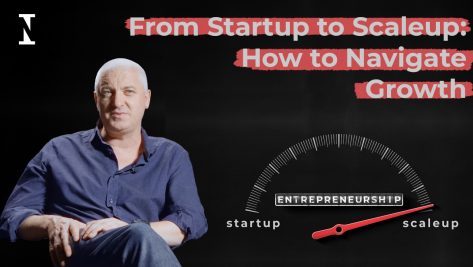Music and law are sectors with decades of experience. Their companies should have been the first to anticipate the paradigm shift in their respective business areas, but instead they generally adopted a conservative stance, opting to wait and see whether any changes would be needed. In both sectors, new competitors have taken advantage of emerging trends. They do not operate in familiar market of the traditional model; instead, like start-ups, they focus on expanding their customer base. For the music industry, the Internet was once the problem but is now the solution. And the legal industry, having redefined access to clients and legal processes, is looking at the future from a different perspective.
From the 1970s to the 1990s, recorded music followed its basic business model. The industry’s successful pattern of activity was to release a promotional single, then a CD (or whatever the prevailing format was at the time), then a second single, and then send the group on tour. Starting in the year 2000, technological advances caused record sales to fall sharply, by more than 40%. In that context, record companies started to see recorded music as a promotional tool rather than a commercial product and chose to focus on their artists’ other activities, which were more profitable at that time.
Mobile telephones, texting, merchandising, tours, and sponsorship prompted the industry to adopt a 360º model. As a result, singles were eliminated and investment in promising young artists was slashed. The music industry was slow to respond to the technological threat, and it took a while to settle on a profitable pattern that worked for both parties. Then along came Napster, a file-sharing service that revolutionized the music business.
The music industry was in a good position to take advantage of the paradigm shift but failed to do so, providing an opening for a new company—Spotify—to make money.
Something similar has happened in the world of law. For more than a century, the legal sector has followed the system established by Paul Cravath in 1899, which applies a “law factory” concept based on Henry Ford’s automotive assembly-line model. On the basis of specialization, coordination, and the optimization of output and resources, law firms were thought of as businesses and partners were evaluated and remunerated accordingly. The foundations of this practice are specialized lawyers and areas, capital in the hands of owner-professionals, and young people who are motivated to make partner. The model relies on financial ratios based on the number of hours lawyers dedicate to the firm and its clients.
Over the past two decades, emerging new elements in the macroenvironment have forced the legal sector to change. Sophisticated clients want more for less—they want to see techniques from the tech industries applied to their legal affairs—and young lawyers are no longer blinded by the ambition of making partner. The responses of the legal sector are coming not from old players but from disruptors.
For the music industry, the Internet was once the problem but is now the solution. And the legal industry, having redefined access to clients and legal processes, is looking at the future from a different perspective.
Successful new businesses
This new reality has put innovative business opportunities on the table in both the music industry and the legal profession, and new models are starting to emerge. Daniel Ek launched Spotify, Ramón Sastrón founded Upclose, and Mark Harris revolutionized the legal industry by creating Axiom. In the same vein, Jesús María de Arriaga cofounded Arriaga Asociados. None of them had previously led a top company in their respective sectors.
Daniel Ek came from Napster. He founded Spotify in Sweden after realizing that factors such as the Internet, the widespread availability of broadband access, and Web 2.0 had transformed the way people consume music. He noticed that people wanted music on demand, so he seized the opportunity to make them pay for access. Daniel wasn’t a part of the music industry; he came from the technological side of things. He created a platform that now has a presence in more than 60 countries, is able to secure financing without any trouble, has more than 12 million subscribers, has paid $2 billion to record companies, distributors, and artists, and now accounts for more than 10% of total revenue in the recording industry.
Spain has its own visionary in this sector: Ramón Sastrón. Having worked for Universal Music and Universal Pictures, Ramón knew the musical entertainment industry very well. As an industry insider, he wondered if there was a way to make content other than music sustainable and marketable. Ramón noticed that the public was interested in knowing more about artists and seeing them up close—and there, he saw a business opportunity. In 2010, he promoted Spain’s first interactive online concert, featuring the group Maldita Nerea. This first experiment drew an average of 9,000 online viewers—12,000 at peak times—and an average viewing time of 90 minutes.
After this first successful venture, Ramón created Upclose. With 15 employees, €1.5 million in turnover, and 50,000 users, the company has been closing deals with all of the major music platforms to broadcast live video. Ramón saw an opportunity to bring together various factors: accessible technology, recording artists’ desire to connect with their fans, and the large number of brands willing to pay for a slice of the action.
The music industry was in a good position to take advantage of the paradigm shift but failed to do so, providing an opening for a new company—Spotify—to make money.
Challengers
In the legal sector, the challengers of the traditional model share certain characteristics. They are proactive and anticipate client requests; in fact, they create their own piece of the market. They have no fears or complexes, so they collide with the prevailing conservative dogma that openly maintains that if something has never been done before, it must be for a reason. They also have a sophisticated business vision characterized by flexible, lightweight structures, hiring done on an as-needed basis, and an avoidance of excessive overhead. These new companies are aware of the inefficiencies of the legal process and of cost management, and they invest in technology. They also eschew rigidity—a trait closely related to their adaptability—and they ask clients questions in order to get first-hand information rather than assumptions. Finally, they provide certainty on the matter of fees, either by providing closed quotes and or by revealing the variables used to calculate prices.
The legal sector contains clear examples of companies that have successfully exploited business opportunities that had been hiding in broad daylight: Axiom, created in the United States by Mark Harris in 2000, and Arriaga Asociados, created in 2008 following the bankruptcy of Martinsa Fadesa, Spain’s largest real estate company.
Axiom has been a revolution. Its founder used to work as an associate at a New York law firm. One day, while preparing an invoice, he discovered that by eliminating some of the variables of the traditional system, he could exploit a business opportunity. Specifically, he decided to reduce or eliminate the partnership system and minimize office-related costs. He also increased investment in technology and introduced measures to promote life-work balance as a means of guaranteeing access to talent. Today, Axiom employs more than 1,300 lawyers at 15 offices around the world and invoices $200 million annually. The firm’s latest contract with a client, a financial institution, was valued at $24 million.
The challengers of the traditional legal model are proactive, eschew rigidity, ask clients questions, provide certainty on fees, and invest in technology.
The case of Arriaga Asociados: an industrialized legal consulting system
Arriaga Asociados took advantage of an opportunity that other firms failed to notice. During the economic crisis, many companies went into bankruptcy and ended up in conflict with people who perceived that their economic, financial, or housing situation was under attack. Arriaga focuses on the defense of consumers’ rights. It does not side with banks or real estate developers. The bulk of its business involves civil lawsuits, which are characterized by huge volumes of similar tasks that are susceptible to standardization. This has allowed Arriaga to organize itself around work methods shown to be successful in industrial settings. The office operates like an engineering firm. The complicated task is developing the prototype. Each lawsuit involves hours of research and analysis, but all this work makes subsequent lawsuits easier to handle. This process takes place within a system of continuous improvement that incorporates the experience gained in court on a day-to-day basis. At the same time, the firm maintains service-oriented standards for cases that break the mold and require “legal craftsmanship.”
Arriaga also eschews the traditional model and breaks the industry’s psychological barriers by exploiting all sorts of marketing tools. The firm’s great differentiating weapon is the use of advertising and the media to deliver its message directly to consumers. As for the ownership structure, Arriaga once again breaks the industry mold by having just three partners; the rest of its staff are professionals employed by the firm. Arriaga serves its clients in person during office hours and by phone around the clock, using a specialized area-based system. The most important department is the format department, which is staffed by former judges and lawyers. These professionals specialize in cases that are not suited to the firm’s assembly-line approach but could eventually be standardized if the volume of such cases were large enough.
© IE Insights.











